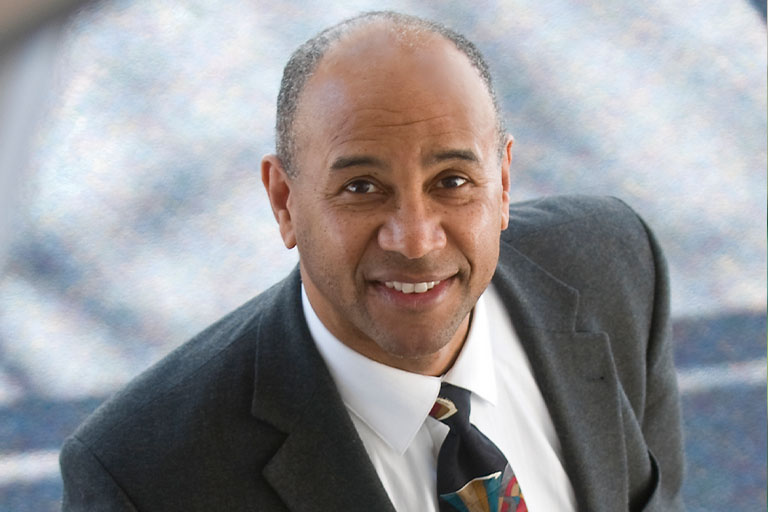It is difficult to summarize Mark McPhail’s experiences with one single title. Throughout his career, McPhail has served in roles including faculty member, researcher, academic administrator, and educational consultant. While he has dedicated his academic career to studying communications with a focus on rhetoric and race relations, he has also worked on a diverse range of projects, including serving as an expert for the International Criminal Tribunal for Rwanda and collaborating with colleagues to produce a field guide to birds of the Bahamas.
Now, as a senior research fellow within Indiana University’s Office of the Vice President for Diversity, Equity, and Multicultural Affairs, McPhail has begun work on a new project: a historical record of diversity and inclusion at Indiana University. In preparation for the university’s 2020 bicentennial, McPhail’s work will examine the ways in which the IU story has historically celebrated and embraced diversity, but also the often invisible narratives of underserved communities, and how the university is working to right this invisibility today
“Oftentimes, people’s voices aren’t heard when they should be,” McPhail said. “That’s really the connection to my work, and one of the things that attracted me most to the project, that people want to make sure these voices are heard--the good, the bad and the ugly.”
McPhail’s work on the project began when James C. Wimbush, IU’s Vice President of Diversity, Equity, and Multicultural Affairs, Dean of The University Graduate School, and Johnson Chair for Diversity and Leadership, came across McPhail’s work and thought he would be perfect for the project. After a short conversation with Wimbush, McPhail agreed to take on a manuscript about IU’s history of diversity and inclusion to be published for the university’s bicentennial.
“What we’re hoping to do is to bring to the surface more of the history of our diversity and inclusion across our campuses,” Wimbush said.
In the early stages of his research, McPhail’s work has predominantly focused on reading the existing histories of IU. Focusing on works like Thomas D. Clark’s history of Indiana University, McPhail aims to see how the historical narrative of IU has been shaped in the past, as well as to examine what narratives have been left out. By pairing this reading with further research and interviews, McPhail will work to broaden these narratives to paint a more holistic picture of diversity and inclusion at the university. In doing so, McPhail’s work will also be highly collaborative; already, he has worked with IU’s Oral History Archive and the Monroe County Historical Society, among others.
Though his research is still in its early stages, McPhail already has a sense of how his manuscript will be structured. Employing a variety of methodologies, McPhail’s research will look at how historically underserved communities at IU have negotiated their relationship to the university through processes of assimilation, integration, revolution and transformation. In doing so, McPhail aims to tell two stories of invisibility that have characterized Indiana University’s history. The first, he said, details the exclusion of underserved or marginalized communities from the dominant cultural narrative of the university. The second is the invisibility of this dominant narrative in itself--an invisibility that results in the narrative being the unquestioned default within the culture of IU. Addressing this invisibility will allow McPhail to draw attention to the transformative work that members of the IU community are doing make the university a more diverse and inclusive space.
By examining these invisibilities and the ways they have impacted members of historically underserved communities at IU, McPhail intends to ultimately broaden the narrative of the university to include previously marginalized perspectives. Determined to avoid the romanticized accounts of Indiana University that have defined some previous historical accounts, McPhail intends to tell the university’s history in a candid and unvarnished manner. Doing so, he said, may not be entirely comfortable, but fidelity to the truth is his utmost concern.
“The thing I most admired about Thomas Clark, the University’s Sesquicentennial Historian, is that, in his introduction to his book Indiana University: Midwestern Pioneer, he talks about the fact that this is an institution of higher education, and ultimately our goal here is the search for truth, no matter how uncomfortable that might make someone,” McPhail said.
McPhail’s manuscript, tentatively titled “Shades of Crimson and Cream: A Diverse Peoples’ History of Indiana University, 1820-2020,” will be completed in August 2019.


